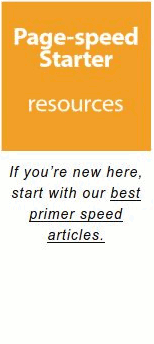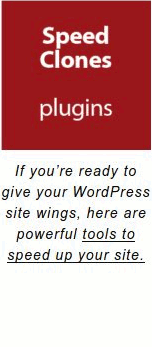Just did a quick test. HotJar adds 500 milliseconds to your page load time – globally. THAT move blows 25 percent of the entire performance budget. You want to reconsider activating that plugin and API?
HotJar – an all-in-one analytics and feedback platform – provides heatmaps, visitor recordings, conversion funnels, form analytics, and more.
We find Hotjar often on commercial websites. Especially websites with speed problems.
What Alfredo Gutierrez of FunctionLabs says about the benefit of Hotjar:
Why user recording?
Hotjar allows us to literally see what people see, rather than guessing at what happens between pages.
Google Analytics shows the number of people who clickthrough or purchase, but Hotjar shows us friction.
It shows where someone scrolls to and between, what they see, and what happens when they do something.
This saved us numerous times. Here are two I recall:
– Android users would click on a button, which led them to bounce instead of go through to the next page. We didn’t test thoroughly enough, and turns out the email code would kick them out of the browser app entirely, and there was a bug where the back button wouldn’t work. iPhones would just pop up their Mail app, allow for the email to be sent, and immediately send the user back to the browser. We were about to stop Android traffic altogether because it didn’t seem like it was converting, but it was actually just an Android bug. So, we excluded Android from this particular funnel split test, and it converted again.
– We tested a new long-form sales letter. GA / Mixpanel showed low conversions on two of four variations. Policing that data with FullStory showed us that although the conversions were lower on the two, the users were much more engaged with certain page sections. We could’ve nixed the two variations and committed to a different hypothesis, but instead we took the section that saw a lot of interaction, and mixed it into the original variation. That resulted in a 27% bump in conversion.
Why does a small site / business need so much data recording?
My philosophy on this is that the smaller budget you got, the more data you need.
With our previous big business, we had so many media buys and so many transactions coming through, that we could ignore issues and still make a profit.
The smaller businesses have a much slimmer margin of error.
They’re also gun shy, and more demanding of information, even though traffic is about 3x more expensive now than it was 5 years ago. They want information after $1k adspend. They want to know which variation wins after 40 conversions.
They want to squeeze ‘insight’ from insignificant information.
So, user recording gives us a *direction* to go down, if we want to test something. Instead of a hunch, we can test something backed by something.
And when we do have a lot of information, it’s also a great policer of our assumptions.
Thanks, Alf, for sharing your knowledge about Hotjar benefits.
What others have to say about Hotjar and speed:
The one script Hotjar has you add to your site adds a tremendous 479k to the size of the fully loaded website. To put that into perspective, my site was only 1mb before adding the code. This means that hotjar is almost the same size as HALF OF MY WEBSITE!
Despite the asynchronous loading, you can feel that the website is sluggish when Hotjar is enabled.
So you have to ask yourself: “Do I value the data hotjar is providing over a faster website for my users?”
My website typically loads between 1.5 – 2.5 seconds without Hotjar, and up to 4 seconds with Hotjar – Andrew Curtin
“HotJar significantly reduced the loading speed of our website. This became a serious problem and we eventually had to remove it all together.” Patrick Eng, Marketing Technologist
“Snippet. Sounds small. Lightweight. Not a big deal, right? Well, wrong. One script alone adds just a tiny bit of extra to your load time, but scripts can really take a toll once they are combined.”
A lot of third party JavaScript means slow load times. The effects are cumulative. Be (very) conservative about embedding third party JavaScript – Janos Pasztor
“So for example, the Google Analytics Javascript is used by nearly two thirds of web sites within our sample; is 15KB in size; and takes 0.25 seconds to download on average, with 8.6% of the samples taking longer than 1 second. ” – Ari Weil
“Just like any JavaScript such as Google Analytics or tracking pixels… [Hotjar] is going to add load time to your website. There is no way of getting around that. Every script you add to your site, whether async or not, adds to your overall page weight.” –Brian Jackson
“Unfortunately neither you nor WP Rocket (nor any other caching plugin) can control the speed or performance of resources which are located on external servers (like Google, Hotjar or Facebook servers).” –Alice Orru
You insist you must have HotJar information? Fine. But after testing for 3 months, deactivate it. Test again in another six months if you must. Don’t just leave it sitting burning up speed. Give your site users a break.
Godspeed-
![]()
Steve Teare
performance engineer
February 2025
PagePipe Site Tuning Services for Speed
Instead of band-aid approaches, we drill down to the root cause of your slow site. This is origin optimization. Also known as site tuning. To do this, we analyze site components:
- Hosting
- Theme
- Plugins
- Scripts and third-party services.
- Images and media library.
- We minimize globally loading plugin effects.
Find out more details about Site Tuning – Get Speed!






